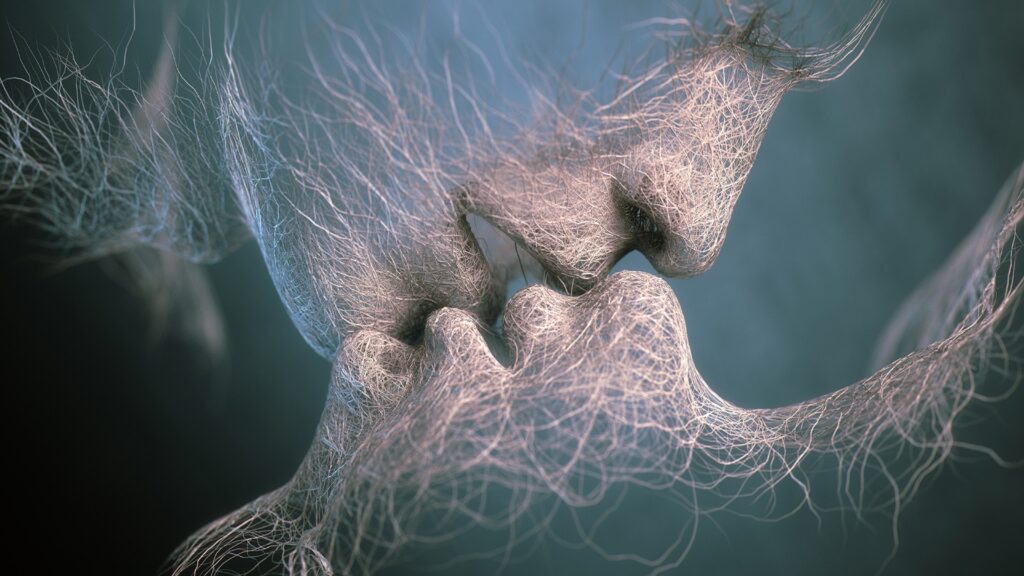
Dark romance books are a captivating subgenre that delves into the complexities of love intertwined with themes of danger, psychological tension, and moral ambiguity. For the LGBTQ+ audience, these narratives can offer a unique and profound exploration of relationships that challenge societal norms and dive deep into the human psyche. So, what exactly makes a dark romance book? Let’s unravel the elements that define this intriguing genre.
Defining Dark Romance
At its core, a dark romance book combines the elements of a love story with darker themes such as obsession, power dynamics, and psychological conflict. Unlike traditional romance, which typically centers around an idealized and often predictable love story, dark romance delves into the shadows of human emotions and relationships.
Exploring the Shadows
Dark romance often pushes the boundaries of conventional storytelling, exploring the grey areas of morality and human behavior. It challenges readers to confront uncomfortable emotions and situations, making the narrative both compelling and thought-provoking.
Key Elements of Dark Romance
Several elements distinguish dark romance from other romance subgenres. Understanding these components helps in appreciating the depth and complexity of these stories.
Themes of Obsession and Possession
Dark romance frequently explores themes of obsession and possession, where love becomes a consuming force. These narratives often depict characters who are driven by intense, sometimes unhealthy, emotions.
Power Dynamics and Control
Power dynamics play a crucial role in dark romance. The interplay of dominance and submission, control and surrender, adds layers of tension and intrigue to the story.
Moral Ambiguity
In dark romance, characters are often morally ambiguous, blurring the lines between right and wrong. This ambiguity creates a more realistic and relatable portrayal of human relationships, highlighting the complexities of love and desire.
The Allure of Moral Ambiguity

Why are readers drawn to morally ambiguous characters and situations? Part of the allure lies in the relatability of these flawed characters and the realistic portrayal of their struggles and decisions.
Relatable Imperfections
Morally ambiguous characters reflect the imperfections of real life, making them more relatable and engaging. Readers can see parts of themselves in these characters, even when their actions are questionable.
Emotional Complexity
The moral ambiguity in dark romance adds emotional complexity, creating a rich, layered narrative that keeps readers hooked. This complexity allows for a deeper exploration of themes such as redemption, forgiveness, and the human capacity for change.
Complex Characters
Characters in dark romance are often multi-dimensional, with intricate backstories and motivations. These complex characters drive the narrative, creating a dynamic and unpredictable storyline.
Antiheroes and Antiheroines
Antiheroes and antiheroines are common in dark romance. These protagonists are flawed and often engage in morally questionable behavior, but their depth and vulnerability make them compelling and sympathetic.
Troubled Pasts
Characters in dark romance frequently have troubled pasts that influence their present actions and relationships. These backstories add depth to their personalities and provide context for their behavior.
Psychological Tension and Emotional Depth
Psychological tension is a hallmark of dark romance, creating an intense emotional experience for readers.
Mind Games and Manipulation
Dark romance often involves psychological mind games and manipulation, adding an element of suspense and unpredictability. These mind games can create a cat-and-mouse dynamic that keeps readers on edge.
Deep Emotional Connections
Despite the darker themes, dark romance often features deep emotional connections between characters. These connections can be intense and transformative, providing moments of vulnerability and tenderness amidst the tension.
The Role of Consent and Boundaries
Consent and boundaries are critical considerations in dark romance, given the intense and often controversial themes.
Navigating Consent
Dark romance narratives often navigate the complexities of consent, exploring situations where boundaries are tested and challenged. It’s essential for these stories to handle consent thoughtfully and respectfully.
Respecting Boundaries
While dark romance pushes boundaries, it’s crucial for the narrative to respect the characters’ autonomy and agency. This balance ensures that the story remains engaging without crossing into harmful territory.
Dark Romance in LGBTQ+ Narratives

Dark romance within LGBTQ+ narratives offers unique perspectives and representation, enriching the genre with diverse voices and experiences.
Representation and Diversity
LGBTQ+ dark romance provides representation for marginalized voices, exploring the unique challenges and dynamics of queer relationships. These stories often highlight the intersection of identity, desire, and societal pressures.
Breaking Stereotypes
LGBTQ+ dark romance challenges stereotypes and broadens the understanding of queer relationships. By exploring complex, multi-faceted characters, these narratives push against traditional norms and expectations.
Popular Dark Romance Tropes
Several tropes are commonly found in dark romance, each adding its unique flavor to the genre.
Enemies to Lovers
The enemies-to-lovers trope is a staple in dark romance, creating a dynamic where intense emotions can evolve from hatred to passion. This transformation often involves power struggles and psychological tension.
Forbidden Love
Forbidden love is another popular trope, where characters navigate relationships that are considered taboo or unacceptable. This trope adds an element of risk and excitement to the narrative.
Captive and Captor
The captive and captor trope explores themes of power and control, often involving a character who is physically or emotionally confined by another. This dynamic can create intense psychological and emotional conflict.
Dark Romance vs. Traditional Romance
Understanding the differences between dark romance and traditional romance helps appreciate the unique aspects of the genre.
Themes and Tone
While traditional romance focuses on idealized love and happy endings, dark romance delves into darker, more complex themes. The tone of dark romance is often more intense and emotionally charged.
Character Archetypes
Traditional romance features characters who are often idealized and morally upright. In contrast, dark romance characters are flawed, complex, and morally ambiguous, adding depth and realism to the story.
The Appeal of Dark Romance
What makes dark romance so appealing to readers? The genre’s unique blend of intense emotions, complex characters, and moral ambiguity creates a compelling and immersive reading experience.
Emotional Intensity
Dark romance offers an emotionally intense experience, drawing readers into a world of passion, conflict, and psychological tension. This intensity keeps readers engaged and invested in the characters’ journeys.
Cathartic Exploration
Reading dark romance can be a cathartic experience, allowing readers to explore darker emotions and scenarios in a safe and controlled environment. This exploration can be both challenging and rewarding.
Criticisms and Controversies
Despite its popularity, dark romance has faced criticisms and controversies, particularly regarding its portrayal of sensitive themes.
Ethical Concerns
Critics often raise ethical concerns about the depiction of non-consensual acts, power imbalances, and unhealthy relationships in dark romance. These concerns highlight the importance of handling such themes responsibly.
Balancing Fantasy and Reality
Authors of dark romance must balance the fantasy elements of their stories with a respectful and realistic portrayal of sensitive topics. This balance ensures that the narrative remains engaging without perpetuating harmful stereotypes or behaviors.
Recommendations for Dark Romance Books
If you’re interested in exploring dark romance, here are some recommended books that offer compelling and diverse narratives:
- “Captive Prince” by C.S. Pacat – A gripping tale of political intrigue, power dynamics, and forbidden love in a fantasy setting.
- “The Darkest Part of the Forest” by Holly Black – A modern dark fairy tale with LGBTQ+ representation and complex characters.
- “Killing Sarai” by J.A. Redmerski – A story of survival, love, and transformation set in a dark and dangerous world.
- “Wolfsong” by T.J. Klune – A supernatural romance that explores themes of identity, family, and love against a backdrop of mystery and danger.
- “The Foxhole Court” by Nora Sakavic – A dark, character-driven story about trauma, resilience, and the bonds formed through shared struggles.
Conclusion
Dark romance books offer a unique and intense reading experience, exploring the shadows of human emotions and relationships. For the LGBTQ+ audience, these narratives provide representation and a deeper understanding of complex dynamics within queer relationships. Whether you’re drawn to the psychological tension, moral ambiguity, or the emotional depth, dark romance has something to offer. As you dive into this captivating genre, remember to approach these stories with an open mind and an appreciation for the complexities of love and desire.
FAQs
1. What defines a dark romance book?
A dark romance book combines love stories with darker themes such as obsession, power dynamics, and psychological conflict, often featuring morally ambiguous characters.
2. How does dark romance differ from traditional romance?
Dark romance explores more complex and intense themes, focusing on flawed characters and moral ambiguity, whereas traditional romance centers around idealized love and happy endings.
3. Are there LGBTQ+ dark romance books?
Yes, there are many LGBTQ+ dark romance books that offer diverse representation and explore unique dynamics within queer relationships.
4. What are some common tropes in dark romance?
Common tropes in dark romance include enemies to lovers, forbidden love, and captive and captor dynamics, each adding tension and complexity to the story.
5. Why is dark romance popular among readers?
Dark romance is popular due to its emotional intensity, complex characters, and the cathartic exploration of darker emotions and scenarios.
